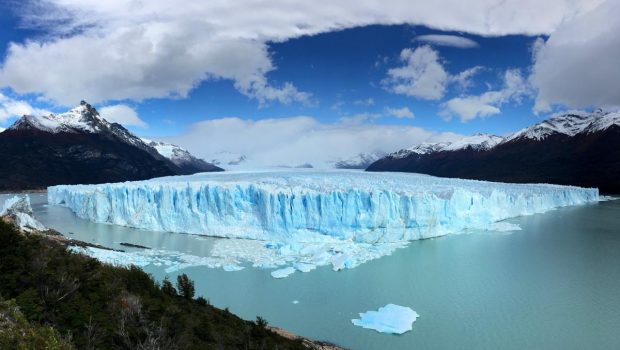3 ways technology is helping the world adapt to climate change – The European Sting – Critical News & Insights on European Politics, Economy, Foreign Affairs, Business & Technology
This article is brought to you thanks to the collaboration of The European Sting with the World Economic Forum.
Author: Simon Torkington, Senior Writer, Formative Content
- New technologies are proving key in the urgent process of climate adaptation.
- AI is being used to detect wildfires and send early warnings to forest communities.
- While Google is using satellites and machine learning to issue detailed flood alerts.
It’s now inevitable that we will have to learn to live with the effects of climate change.
Despite the agreements made at the recent COP 27 summit, we are too far down the road to escape at least some consequences of the global warming that has already taken place.
According to NASA’s Earth Observatory: “The average global temperature on Earth has increased by at least 1.1° Celsius since 1880. The majority of the warming has occurred since 1975, at a rate of roughly 0.15 to 0.20°C per decade.”
While efforts on climate mitigation continue, climate adaptation will be critical. These are 3 technologies that can help us adapt to a changing climate.
1: Google Flood Hub
Google’s Flood Hub alert system uses machine learning technology to warn people in harm’s way when rivers, oceans and lakes pose a threat to life or property. Flood Hub alerts include easy to understand inundation maps, with details of the at-risk area and flood heights relative to adult body height.
Google has been providing flood alerts since 2018. The early focus was on high-risk areas in Bangladesh and India. In 2021, the system sent out 115 million alerts in an area that’s home to 360 million people. The system is now being expanded to cover more countries in South Asia and South America, with an ambition to take the service global.
2: Climate adaptation using AI
Artificial intelligence will play an important role in climate adaptation, according to the consultancy firm BCG. In its Framework for Using AI to Combat Climate Change, BCG identifies a number of areas for climate adaptation via AI.
“AI can be applied to improve hazard forecasting for regionalized long-term events, such as sea-level rise, and for immediate, extreme events such as hurricanes, among other possibilities. These applications include the management of vulnerability and exposure, such as by developing infrastructure that can minimize the impact of climate hazards,” BCG says.
One application by San Francisco-based Pano AI uses the technology to detect wildfires, alert homeowners and assist fire crews in controlling the fires. The AI scans video feeds of mountaintop cameras to detect the first signs of the outbreak of a wildfire. It then alerts homeowners and first responders in the area.
3. IoT for water management
The smart use of water will be essential as temperatures rise and rainfall patterns are disrupted by climate change. The Internet of Things (IoT) is being used in Brazil, Italy and Spain to manage and maximize the impact of water supplies for agricultural use.
In a report for the United Nation’s Economic and Social Commission for Asia and the Pacific, Cristina Bernal Aparicio and Siope Vakataki ‘Ofa found that “the Internet of Things has proven to be effective in reducing water consumption and energy costs, as demonstrated in the implementation of the SWAMP project in Brazil, Italy and Spain. The estimated water saving potential varied from 18-38%.”
Discover
What’s the World Economic Forum doing about climate change?
Climate change poses an urgent threat demanding decisive action. Communities around the world are already experiencing increased climate impacts, from droughts to floods to rising seas. The World Economic Forum’s Global Risks Report continues to rank these environmental threats at the top of the list.
To limit global temperature rise to well below 2°C and as close as possible to 1.5°C above pre-industrial levels, it is essential that businesses, policy-makers, and civil society advance comprehensive near- and long-term climate actions in line with the goals of the Paris Agreement on climate change.
The World Economic Forum’s Climate Initiative supports the scaling and acceleration of global climate action through public and private-sector collaboration. The Initiative works across several workstreams to develop and implement inclusive and ambitious solutions.
This includes the Alliance of CEO Climate Leaders, a global network of business leaders from various industries developing cost-effective solutions to transitioning to a low-carbon, climate-resilient economy. CEOs use their position and influence with policy-makers and corporate partners to accelerate the transition and realize the economic benefits of delivering a safer climate.
Contact us to get involved.
Putting tech where it’s most needed
The potential for technology to help us mitigate and adapt to climate change has yet to be fully tapped. The UN is urging more and speedier action to develop, apply and transfer climate technologies to developing countries. Much of the innovation of climate adaptation tech is happening in the global north, but the majority of people in the firing line of climate change impacts are in the global south.








Gloss